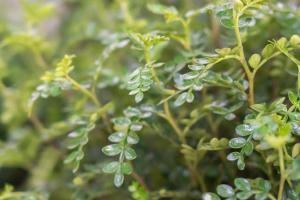How to Get Rid of Mold in Potted Plants
Mold in potted plants is a common problem that can leave your plants looking sickly and weak. Not only can mold impact the health of your plant, it can also cause damage to the soil and eventually spread to other plants nearby. Fortunately, with a few simple steps, you can easily eliminate mold and prevent it from returning in the future.
Identify the Mold
The first step in getting rid of mold is to identify the type of mold present in your plant. Different types of mold require different treatment methods. Some common types of mold include powdery mildew, white mold, and black mold. Powdery mildew looks like a fine white dust on the leaves and stems of plants, while white mold looks like thick white cottony patches. Black mold is a dark, slimy substance that can appear anywhere on the plant.
Remove Infected Areas
If your plant has only a few small spots of mold, you can often remove these areas by hand or with a cloth. However, if the mold has spread extensively throughout the plant, it may be necessary to cut off infected areas to prevent further spread. Be sure to use sharp, sterile scissors or pruners to avoid damaging the plant. Dispose of any moldy plant material away from other plants to prevent further contamination.
Clean the Pot
Once you have removed infected areas from the plant, it is essential to clean the pot thoroughly to prevent the mold from returning. Begin by removing any remaining soil from the pot. You can wash the pot with a solution of one part bleach to nine parts water or use a commercial cleaning product specifically designed for plant pots. Rinse the pot thoroughly and allow it to dry completely before repotting the plant with new, fresh soil.
Change Watering Habits
If the mold in your plant was caused by overwatering or poor watering habits, it is essential to adjust your watering routine. Water your plant only when the soil feels dry to the touch, and be sure to avoid leaving water standing in the saucer beneath the pot. Additionally, provide proper drainage for your plant by adding gravel or sand to the bottom of the pot before adding soil.
Use Fungicides
If mold persists, despite following the above steps, it may be necessary to use a fungicide to eradicate the problem. Select a fungicide that is recommended for use on your type of plant and follow the manufacturer's instructions carefully. Fungicides are available in various forms, including sprays, granules, and liquids. Be sure to wear gloves and protective clothing when applying fungicides to avoid exposure to harmful chemicals.
Conclusion
Mold in potted plants can be an eyesore and a threat to the health of your plants. Fortunately, by identifying the type of mold present, removing infected areas, cleaning the pot, adjusting watering habits, and using fungicides if necessary, you can quickly get rid of mold and prevent it from returning in the future. With a little effort and care, your plants can thrive and remain healthy for years to come.

 how many times do yo...
how many times do yo... how many planted tre...
how many planted tre... how many pine trees ...
how many pine trees ... how many pecan trees...
how many pecan trees... how many plants comp...
how many plants comp... how many plants can ...
how many plants can ... how many plants and ...
how many plants and ... how many pepper plan...
how many pepper plan...
































